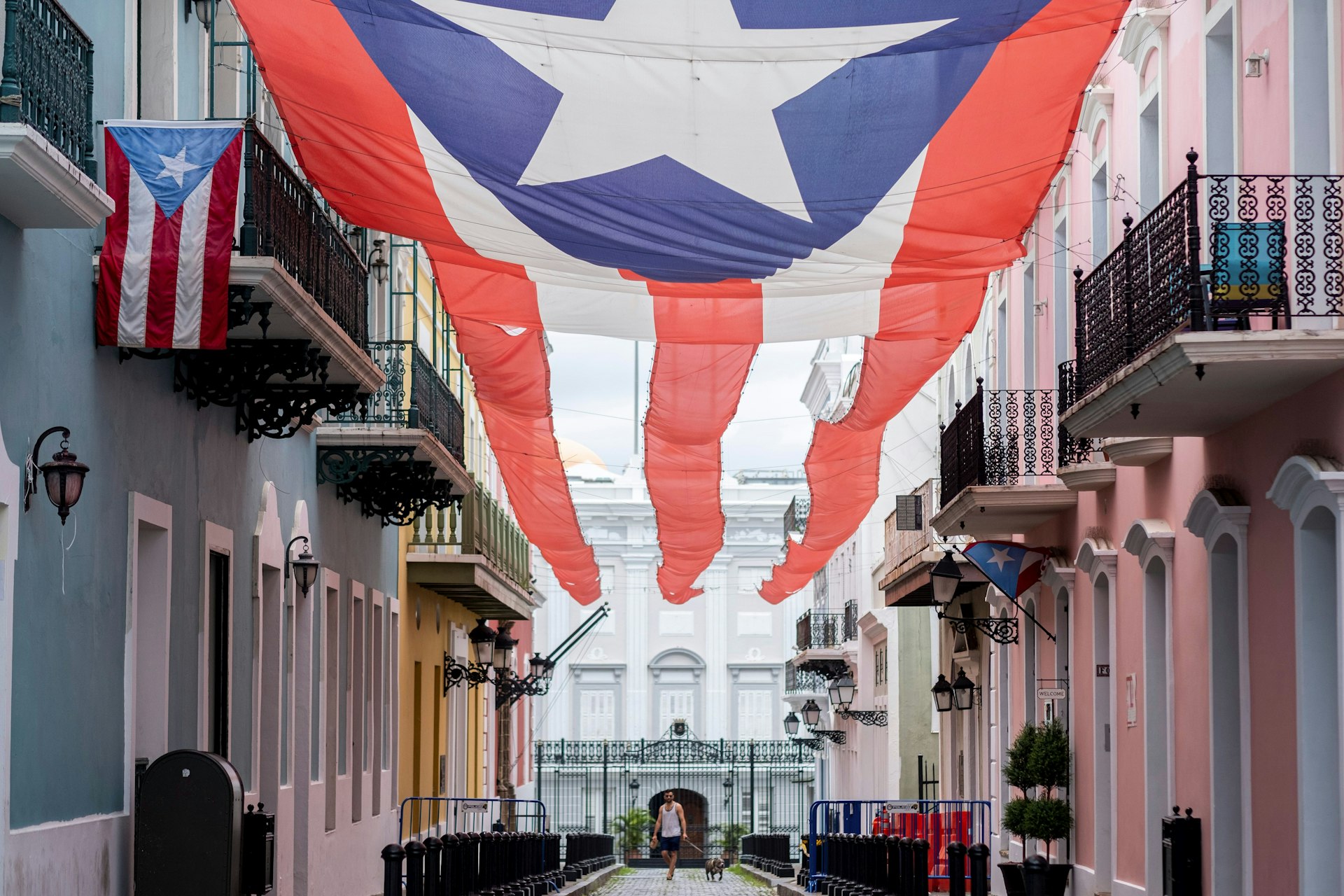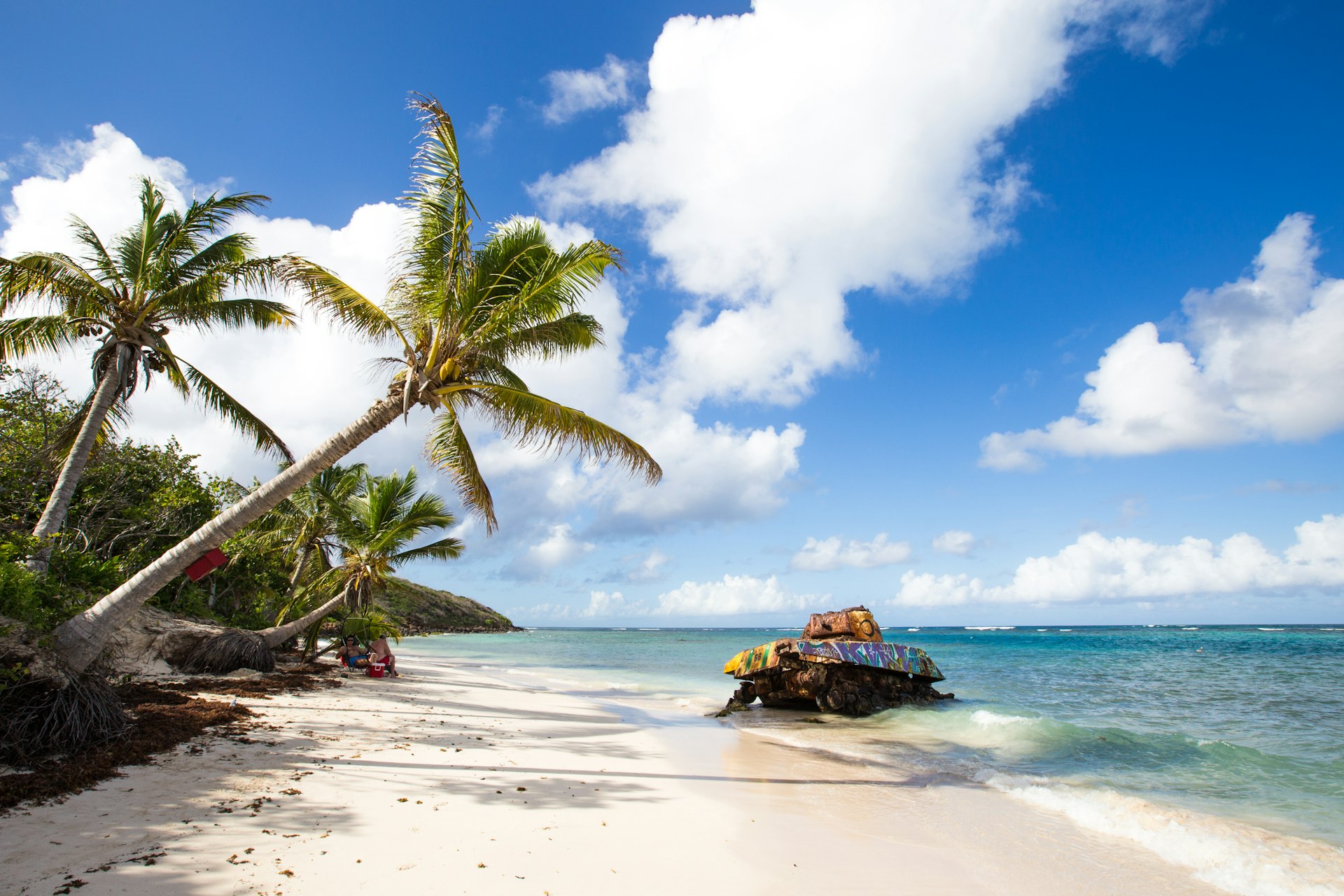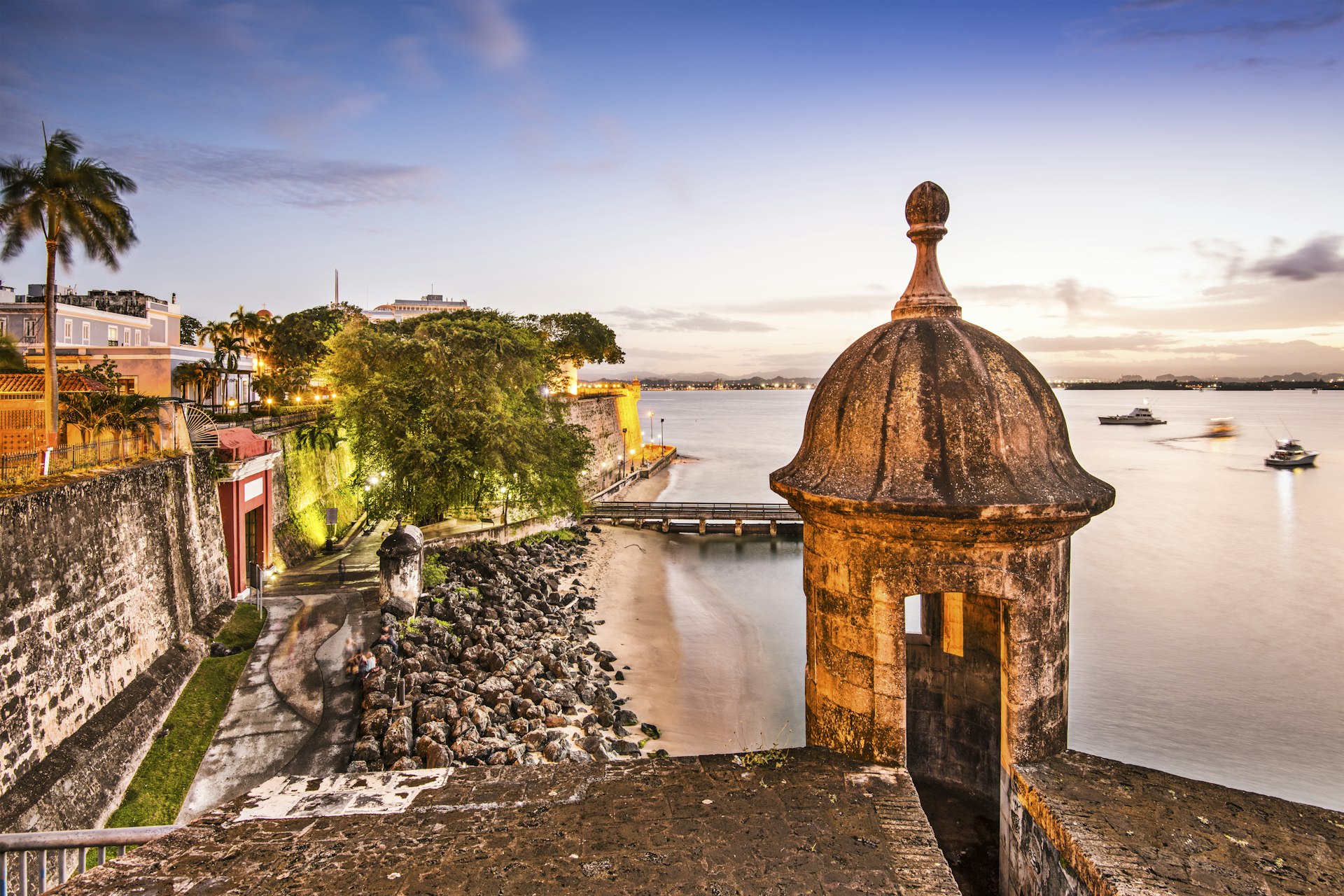With its lush beaches, historic cities and party vibe, Puerto Rico is emerging as one of the top island escapes in the Caribbean.
However, compared to neighboring islands, such as the Dominican Republic, Jamaica and Cuba, traveling here can be expensive. With the lack of reliable public transport, rising living costs, an 11.5% tax rate on all goods and services, a general lack of hotels offering all-inclusive packages, and the island’s political relationship with the US, a visit to Puerto Rico can be a high-priced affair.
But don’t despair. There are plenty of pocket-friendly ways to experience the best of what the island has to offer. From feasting on great flavors to relaxing on sandy beaches with crystal clear waters and strolling through historic city streets, here’s how to visit Puerto Rico on a budget.
1. Visit during the off-season to keep costs down
Traveling during the off-season is a must for a budget trip to any Caribbean destination, and this is especially true in Puerto Rico. Puerto Rico is the land of eternal summer, with daytime temperatures ranging from 70ºF to 80ºF (21ºC to 27ºC) year-round on the coast, so there’s never really a bad time to visit.
The peak tourist season is between December and April, coinciding with the cold winter months in the northern hemisphere. Tourist numbers drop at other times – to avoid crowds, overbooked tours and spikes in hotel prices, come between May and July or from September to early December.
Keep in mind that visiting Puerto Rico in the off-season means coming in hurricane season, which runs from June 1 to November 30. Direct strikes are infrequent but it pays to take out good travel insurance and keep an eye on the weather forecast.
2. There are cheaper accommodations if you know where (and when) to look
Accommodations are likely to be your biggest expense in Puerto Rico. Room rates at three- and four-star hotels can soar up to the high hundreds of dollars per night during the peak holiday months, but the same room can go for as little as US$120–280 per night during the off-season.
Hotels outside the San Juan municipality go for around US$180, so staying away from the capital can also be a way to save. Another good way to shrink accommodation costs is to look out for paradores – smaller, independently owned hotels and guesthouses, which are mostly found outside the San Juan metropolitan area. Seek out family-run paradores in the mountains of Adjuntas or on the beautiful beaches of the Southwest Coast, between Rincón and Ponce.
If you’re looking to save money by cooking your own meals, sites such as Airbnb, JoinaJoin and Vrbo are great places to find reasonably priced apartments. Hostels are still quite new in Puerto Rico and largely found in the Santurce and Old San Juan areas, but they’re a comparatively cheap option. A bed in a six-person dorm-style room at Conturce Boutique Hostel on Calle Loíza – a major entertainment hub – can be as little as US$45 per night.
3. Car rental is cheaper than organized tours and excursions
The cheapest option for exploring the island beyond San Juan is to rent a car. Public transportation is almost nonexistent once you leave the metropolitan area, and tours and excursions are expensive. Depending on the season, you can rent a car from US$24 per day or US$239 per week, and the price of gasoline floats between US$0.97 and US$1 per liter.
While renting a car isn’t exactly cheap, it will allow you to see more of the island and move around at your own pace, without having to pay out for organized trips. Considering Puerto Rico’s size, most of the island (including more off-the-beaten-path places) can be reached in around two hours – perfect road-trip distance.
As an alternative, you can get around using rideshares hailed via the Uber app, or official metered taxis registered with the Puerto Rico Tourism Company, though the costs can soon mount up.

4. Take advantage of low-cost days at the beach
In Puerto Rico, beaches are considered public land, meaning days at the beach are always free, if you exclude parking and snacks. In built-up areas such as San Juan, Carolina and Condado, the beachfront may be obscured by hotels or apartment buildings, but locals will point you to the public entrance if you ask.
Free comes at a price. While there’s no entrance fee to use the sands, you won’t find beach chairs and umbrella rentals, restrooms or lifeguards. For better facilities, seek out the beaches known as balnearios – Boquerón in Cabo Rojo and Seven Seas in Fajardo are two of the best. These popular beach areas are designated as state parks and have parking facilities, restrooms and picnic tables. Parking fees range from US$3 to US$5, and there’s no time limit for your stay.
Local tip for cheap beach days: Puerto Ricans are pros when it comes to beach trips, and you’ll likely see whole families loaded up with coolers and picnic food ready for a day at the beach. Follow their lead and stop by a local supermarket to stock up on food and beverages before hitting the sand.
5. Shop for fresh produce at local markets
Farmers’ markets are a great place to glimpse Puerto Rican culture and pick up some cheap eats into the bargain. The island’s markets sell the freshest local fruits and vegetables in season and offer a chance to chat with farmers from all over the island.
Generally, produce is cheaper at markets than at supermarkets, and you’ll be supporting the local economy. La Placita de Santurce and the Placita Roosevelt in San Juan are the two most famous outdoor markets, and both are packed with vendors. Go early in the morning and shop alongside chefs from nearby restaurants who are picking up fresh fish and produce for their nightly menus.
Markets also offer a chance to grab a cheap lunch. Santurce’s La Placita is home to numerous stalls selling traditional meals, such as arroz con habichuelas (rice and beans), roast pork, tostones (fried green plantains), carne frita (fried pork chunks), alcapurrias (fritters stuffed with meat) and other fried goodies.

6. Dishes served at food trucks are affordable
While beachside food stalls have been a fixture in Puerto Rico for centuries, the past decade has seen a string of chefs and restaurant owners shifting their kitchens onto food trucks, bringing restaurant-quality food to the streets.
On any given night, you can indulge in both local and international dishes at the Miramar Food Truck Park located close to Condado in San Juan. This is not the only park of its kind in San Juan, but it’s the most affordable and has a rotating selection of foods and artisanal beers that won’t break your budget.
You’ll also find food trucks parked on most street corners along the Miramar-Condado-Old San Juan corridor and the rest of the metropolitan area at mealtimes. Beach areas such as the Isla Verde section of Carolina are also teeming with affordable food options.
7. Find inexpensive eats at the island’s bakeries
Alongside the ubiquitous food trucks and beach kiosks, Puerto Rico’s best-kept foodie secret is its collection of panaderías. Equal parts bakery and eatery, these low-cost snack stops offer plates of traditional foods such as rice and beans and carne guisada (beef stew) for as little as US$10.
Panaderías are also great places to track down traditional Puerto Rican breakfast sandwiches and porridge. Don’t forget to order some pan sobao or pan de agua – these baguette-like breads cost from US$2 to US$3 and form the backbone of a hearty Puerto Rican breakfast.
8. Track down bargain cups of Puerto Rican coffee
Puerto Rican coffee is so good that it has become the favorite brew of the Vatican and royal courts across Europe. Skip the big coffeehouse chains and savor Puerto Rican beans at mom and pop stores and independent coffee shops throughout the country.
To enjoy superior coffee at an agreeable price, head to the charming Café Cuatro Sombras in Old San Juan – with its own roastery – or Caficultura, with lovely high ceilings and a tasty food menu.

9. Take a day trip to Vieques and Culebra
Vieques and Culebra are two island municipalities off the coast of Puerto Rico and both are wonderful spots for travelers looking for pristine, uncrowded beaches and the tranquility of small-town life, as well as lower prices.
These languorous islands are blessed with enviable natural resources, from volcanic beaches to wildlife reserves, ornamented with a bewildering collection of bunkers and wartime artifacts left behind after the US Navy vacated the islands. If you can, take your time exploring the islands, and stay for a few days at a local guesthouse.
However, if you just want to spend the day at the many beaches there, the most frugal option is a day trip. Ferries make daily journeys to each island from Fajardo and Ceiba. The boat trip to Culebra usually takes about an hour and costs just US$4.50 for a round-trip ticket.
You’ll pay the same fare to reach Vieques, and you can expect to be on the water for 30–45 minutes. For an additional US$1 fee, passengers can take coolers with food and snacks on board. Kiosks and eateries on the beaches of Culebra and Vieques are scarce, so bring plenty of water and ice for the day.
10. Skip the big clubs for cheaper nights out
Dancing in Puerto Rico is something that happens anywhere and everywhere – you’d be hard-pressed to find any nightlife spot that doesn’t feature some sort of dance floor and loud music. To save on drinks prices, entry fees and parking, skip the big, glitzy nightclubs and head over to more low-key places such as chinchorros (food kiosks), neighborhood bars and outdoors drinking hangouts (Santurce’s La Placita is great for a meal and a few drinks).
By drinking where locals drink, you’ll get to experience nightlife like a Puerto Rican, and enjoy low prices on beer and drinks and a more relaxed dress code – ideal for a post-beach beverage on your way back to the hotel.
A guide to daily costs in Puerto Rico
- Hostel room: US$50–75
- Basic room for two: US$120–280
- Self-catering apartment (including Airbnb): US$60–180
- Local bus ticket: US$0.75
- Urban train ticket: US$1.50
- Cup of Puerto Rican coffee: US$3–5
- A lunchtime sandwich: US$7
- Restaurant dinner for two: from US$40
- A beer in a local bar: US$5
